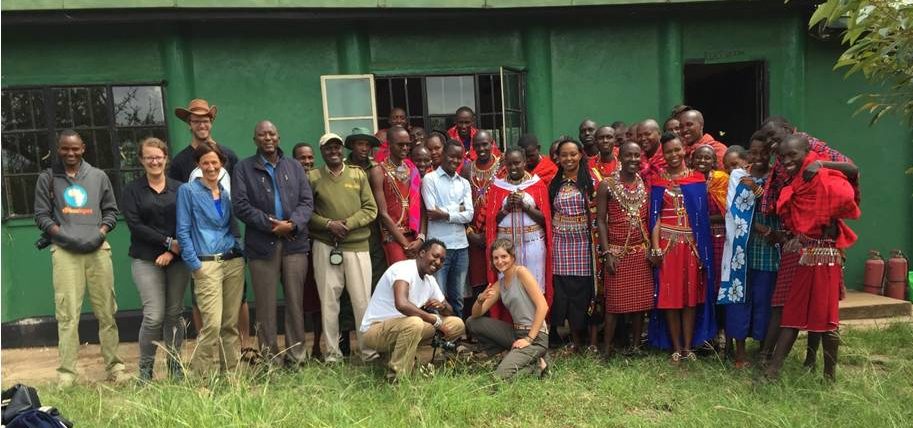Jambo! My name is Ana and my research project involves investigating the impact of various grazing intensities and land management on the vegetation and soil in the Maasai Mara. I know what you’re thinking – studying vegetation for an MRes in Wildlife Conservation? Yes! It’s important to understand how land management techniques alter the vegetation and soil, because without an understanding of the quality and quantity of a species’ food source, we will be less well equipped to address wildlife conservation issues in the future. This led me to 10 weeks in the beautiful Maasai Mara in Kenya. As the first student to do their project in the Mara, it was a time of trial, discovery and firsts for the MRes course.
My project involves studying very different grazing regimes at three conservancies, Naboisho, Pardamat and Ol Kinyei. Within each Conservancy, we worked together with land managers to establish areas of different grazing intensity through a gradient – high to low and no grazing. Along that gradient, we evaluated vegetation structure and diversity as well as soil chemistry (nitrogen, phosphorus, and potassium content) and compaction – all indicators of ecosystem health. We also performed distance sampling of the herbivores in the area to get a better understanding of the grazing activity on the land.
Each week, my guide Joseph Mpoe and I visited one of these Conservancies to take measurements. We used a point frame to take vegetation structure measurements, a measuring tape for sward height, a penetrometer for soil compaction and a thin corer for a soil sample, at each one-metre quadrat. Along the way, we were fortunate enough to find local rangers that were keen on learning the methodology and helping us with data collection. This, a little music and a well-packed lunch helped summon the motivation we needed to complete this tedious task.
While my research involved mainly soil and vegetation investigations, we were not short of wildlife sightings and experiences. During our fieldwork we explored most places within the Conservancies and witnessed incredible sightings along the way. One of the highlights was witnessing a pack of African wild dogs (Lycaon pictus) in Naboisho Conservancy – a very rare sight! I also had the opportunity to spend a weekend in the Maasai Mara National Reserve. The reserve excludes all grazing from livestock and it was interesting to note how different the landscape was as a result, with wildlife almost completely hidden in the tall swards.
I was fortunate enough to stay at African Impact Volunteer Project and Koyaki Guiding School where volunteers live in close proximity to guiding school students. This provided me with a perfect opportunity to interact with the students and to share my research. During my last week in Kenya, I gave a presentation to Conservancy representatives and the guiding school students, as well as staff and friends from African Impact. They were very receptive and asked plenty of questions, which led to an enriching discussion on grazing management and best practices. Through this, my stay at African Impact and my time in the field, I found a sense of home in the Maasai Mara.

Left: A young male lion (Panthera leo) in the Maasai Mara Game Reserve; Centre: an African wild dog (Lycaon pictus) in Naboisho Conservancy wearing a GPS collar for conservation research purposes; Right:A herd of elephants (Loxodonta Africana) in the Maasai Mara Game Reserve
The next step will involve analysing the data both within and between the conservancies. Using the data from this project, the research will provide necessary information to these (and neighbouring) conservancies about the relative impacts caused by differing grazing regimes. It will also help to contribute to a management plan that may both conserve biodiversity and support human needs. While I will be kept busy with data analysis and the write up, I will never forget this experience and I hope to be back in the Maasai Mara very soon.
Posted By : Aggie Thompson

